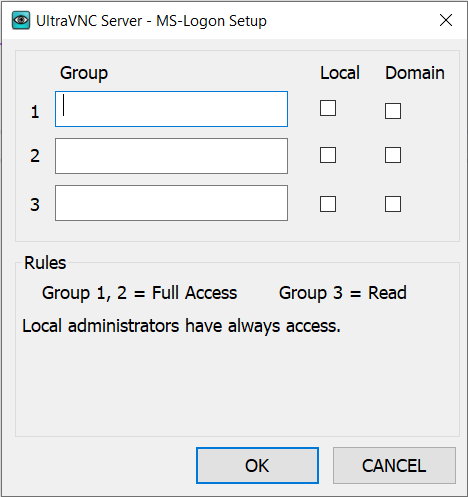Ultravnc Msi Silent Install Password On Router

Scenario You’ve tried several different VNC applications and have decided UltraVNC meets your humble Remote Support needs. Now you want to centrally deploy and manage UltraVNC in your domain. The default installer creates unwanted shortcuts on the user’s desktop, so you need to modify this before rolling out to all client PCs. In addition to this, there are separate installers for 32-bit and 64-bit PCs, so this will have to be accounted for.
Civilization Iii Save Game Editor there. Here is how to achieve remote desktop nirvana using UltraVNC: Solution There are many steps to this one, so let’s break it down into sections: •. Initial installation and testing The purpose of this step is to download, install and configure UltraVNC to our liking. Once we have tested it, we can reuse the. Rapidshare Memento Mori Photography on this page. ini configuration file for other computers. We will also import a registry setting from this test computer into the Group Policy Objects (GPO). • Download the x86 and x64 Msi Installer packages from • Use the relevant.msi installer to install UltraVNC on a test computer. I’m using the x64 installer for a Win7 laptop. • Configure UltraVNC with the desired settings, eg: Note Require MS Logon is selected for Active Directory authentication.
You’ll need to point your client to the provided URL and enter the password. Silent Remote Desktop. Alt-Del command over a Systems Manager remote desktop. Oct 10, 2016 - For example, when your computer makes a request to the router on your network remembers that 'the computer. UltraVNC is an ideal client because you can script the installation to setup the UVNC service with pre-chosen passwords for access, as well as other.
• After making the configuration changes, restart the UltraVNC service (uvnc_service), or restart the computer. • Confirm you can connect to the test computer: Modifying the UltraVNC installer to exclude desktop/start menu shortcuts In this step we’re going to stop the UltraVNC shortcuts from being added to the user’s desktop. • Download and install, or alternatively you can try • Open UltraVnc_10962_x86.msi within Orca. • Select the Shortcut table on the left, select all entries on the right, then select Drop Row(s) from the Tables menu: • Click OK to confirm removal: • Select File >Save. • Now do the same for UltraVnc_10962_x64.msi. Creating a software deployment path We need to create a UNC path on the network to deploy the software from. • Create a folder (eg.
Deploy) and give Everyone, Full Control share permissions: I always find it easier to give Full Control permissions to Everyone, then control access via NTFS Security permissions. It makes troubleshooting file access issues a breezewell, not as bad anyway. • Ensure the application users have a minimum of Read Security permissions (): • You should now have a UNC path of servername Deploy. • Create a folder named ultravnc in the Deploy folder, then copy the modified.msi files from the previous section into the ultravnc folder: Configuring the GPO to deploy UltraVNC We will now create our Group Policy Object that will deploy the UltraVNC application. There are 4 sub-sections to this: •. Add UNC path to.msi file • Create new GPO (eg.
